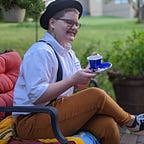Claes Oldenburg: Massive Sculptures for a Modern World
Claes Oldenburg, the quintessential pop art sculptor, has fascinated the world with large replicas of common objects since the 1960s. Born in 1929 in Sweden — the son of a diplomat — Oldenburg studied literature, art history, and studio art at Yale. At seven, his family moved to Chicago. He would later attend the Art Institute of Chicago intermittently while working as a writer for the City News Bureau and an illustrator for Chicago magazine. Oldenburg moved to New York in 1956 and would become the Director of the Museum of Modern Art (MoMA) from 1972–1995.
Oldenburg settled in the Lower East Side. There he found inspiration in the clashing of Jewish and Latino culture, along with the very beginnings of street art. Oldenburgs first contributions to the art world were performance pieces inspired by the grit and energy of urban New York. The Street (1960) was featured for six weeks in a basement gallery on Washington Square. The installation was a collection of crude, messy cardboard cutouts of people and objects abundant in his neighborhood; trash and debris covered the floor. In February of that year, Oldenburg collaborated with artist Jim Dine to create Ray Gun Spex: a series of six performance pieces. The show was hosted in the basement gallery that The Street was housed and featured Oldenburg’s Snapshots From the City as well as Dine’s The Smiling Workman.
In 1961 Oldenburg assembled The Store — a mock shop filled with plaster recreations of common goods. The Store was shown at street level for several months before being moved to the 57th Street Green Gallery with other Oldenburg classics: his three massive floor sculptures, Floor Cake (1962), Floor Cone (1962), and Floor Burger (1962). The early 60s were defined by Oldenburg’s soft sculptures of common objects. Common objects would become essential subjects in the Pop Art movement. During his time with Chicago magazine, Oldenburg regularly created comic strips for publication. Oldenburg is the only pop artist to have professionally drawn comics, despite the comic style being essential to the Pop Art movement. With both of these factors at play, it’s no surprise Oldenburg was swept up in the movement when it emerged in 1962.
Oldenburg’s first public monument, Placid Civic Monument, was installed in 1967. The outdoor performance was situated behind MoMA, where a crew of gravediggers dug a large hole in the ground. As a part of the larger exhibition Sculpture in Environment, Placid Civic Monument was filmed over a few hours; after the hole was dug, it was refilled. Various artists were asked to create public art throughout the city for Sculpture in Environment. In the mid-’60s, Oldenburg began creating massive art projects for public display in cities. The first of these colossal pieces to be displayed was Lipstick (Ascending) on Caterpillar Tracks, which was installed at Yale University in 1969.
Oldenburg is the artist most closely associated with soft sculpture or fabric sculptures. He created studies from fabric, kapok stuffing, and foam rubber. These projects were often massive versions of everyday objects and foods.
Much of Oldenburg’s later massive sculpture work was done in collaboration with Coosje Van Bruggen. The two strayed from soft materials, choosing instead to use steel, concrete, and hard plastics. These sculptures were often too large to be exhibited in museums, and have since become public art. Oldenburg commented on this once, stating, “I don’t like that art sits on its butt in a museum.” While the sculptures continued to take from popular culture, they were not exact replicas. To adapt the object to massive sizes, Oldenburg and Bruggen simplified their forms, creating more imaginative, un-branded interpretations. Re-occurring themes in Oldenburg’s work included urban beautification, commodity culture, and the concept of “public” art in “public” spaces.
“Oldenburg has also created a number of conceptual drawings as part of his “Colossal Monuments” series. Some of his monumental proposals include a vacuum cleaner for New York City’s Battery Park, a giant Good Humor Bar for 5th Avenue in New York, two huge copper toilet balls to float and rise and fall with the tide in the Thames River in London, a lipstick tube for London’s Piccadilly Circus, and a giant windshield wiper that would dip into Lake Michigan from a Chicago park, and a kinetic pair of scissors to replace the Washington Monument.” — Ohio State
